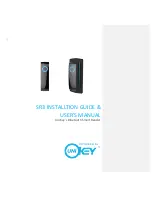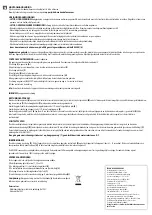
Instruction Manual
D200156X012
4194HA, HB, HC Controllers
July 2018
10
Process Pressure Connections
Process pressures are piped to the connections on the ends of the differential pressure unit (figure 2‐3). Refer to the
differential pressure unit instruction manual for the high and low pressure connections.
Figure 2‐3. Simplified Control Loop Diagram
W5910
SUPPLY
PRESSURE
OUTPUT
SIGNAL
LOW PRESSURE
PIPING
LOW
PRESSURE
CONNECTIONS
HIGH PRESSURE
CONNECTIONS
HIGH PRESSURE PIPING
ORIFICE PLATE
NOTE:
1 TO ALLOW A REAR VIEW OF THE CONTROLLER/DIFFERENTIAL PRESSURE UNIT,
THE SCHEMATIC SHOWS PROCESS FLOW FROM RIGHT TO LEFT.
2 SEE FIGURE 2‐1 FOR LOW PRESSURE CONNECTIONS.
2
1
When installing process piping, follow accepted practices to ensure accurate transmission of the process pressures to
the differential pressure unit. Install a three‐valve bypass, shutoff valves, vents, drains, or seal systems as needed in the
process pressure lines.
If the instrument is located such that the adjacent process pressure lines will be approximately horizontal, the lines
should slope downward to the instrument for liquid‐filled lines and upward toward the instrument for gas‐filled lines.
This will reduce the chance of air becoming trapped in the sensor with liquid‐filled lines or of condensate becoming
trapped with gas‐filled lines. The recommended slope is 83 millimeters per meter (1 inch per foot).
Supply Pressure
WARNING
Severe personal injury or property damage may occur if the instrument supply medium is not clean, dry air or oil‐free,
noncorrosive gas. While use and regular maintenance of a filter that removes particles larger than 40 micrometer in
diameter will suffice in most applications, check with an Emerson Automation Solutions field office and industry
instrument air quality standards for use with corrosive gas or if you are unsure about the proper amount or method of air
filtration or filter maintenance.











































